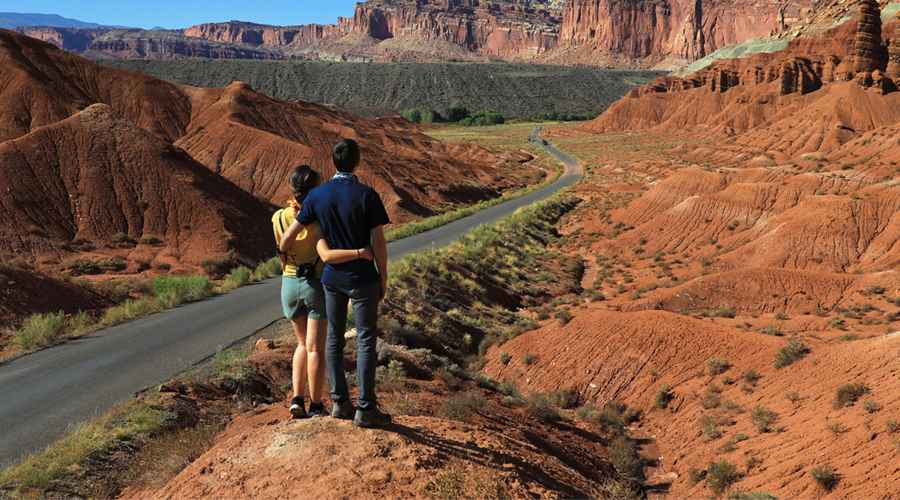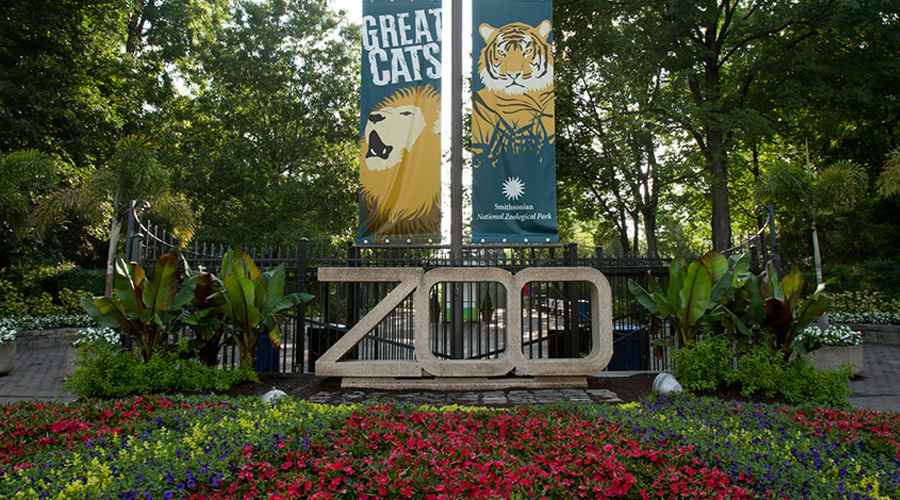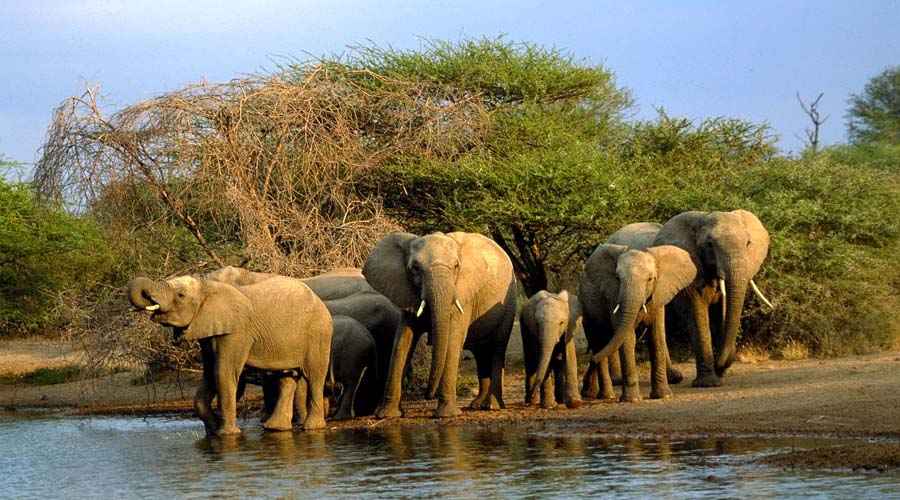Capitol Reef National Park is one of Utah’s hidden treasures, often overshadowed by its more famous siblings in the state’s “Mighty 5” national parks: Zion, Bryce Canyon, Arches, and Canyonlands. Yet, Capitol Reef holds a unique charm that blends geology, history, and natural beauty in a way unlike anywhere else in the American Southwest. Known for its striking cliffs, colorful canyons, and rich pioneer history, the park is both an outdoor playground and a living museum of natural wonders.
Here are 10 fun facts about Capitol Reef National Park that highlight why it deserves a spot on every traveler’s bucket list.
1. It Gets Its Name from Both a Capitol Dome and a Nautical Term
The name “Capitol Reef” might sound puzzling until you know the story. The “Capitol” part comes from a series of white Navajo sandstone domes in the park that resemble the dome of the U.S. Capitol building in Washington, D.C. Meanwhile, the word “Reef” is a term borrowed from nautical language, meaning a rocky barrier to navigation. Early explorers considered the park’s rocky ridges just as impassable as a coral reef at sea. Combined, the name perfectly describes the landscape’s massive stone barriers and dome-like formations.
2. The Park Protects the Legendary Waterpocket Fold
Capitol Reef is home to the Waterpocket Fold, a dramatic wrinkle in the Earth’s crust that stretches nearly 100 miles long. This geologic monocline was formed between 50 to 70 million years ago during the Laramide Orogeny, the same mountain-building event that created the Rocky Mountains. The fold looks like a gigantic step in the Earth’s surface and features canyons, cliffs, and valleys filled with “pockets” that collect water after rainfall, hence the name. It is one of the most striking and scientifically important geologic features in the United States.
3. It Was Once Called “Wayne Wonderland”
Before it became a national park, Capitol Reef was affectionately known as “Wayne Wonderland.” In the 1920s, local boosters, including Ephraim P. Pectol and Joseph Hickman, coined the term to promote tourism in Wayne County, Utah. Their efforts helped put the area on the map, eventually leading to its designation as a national monument in 1937 by President Franklin D. Roosevelt. In 1971, it gained full status as a national park. Though the official name changed, many locals still proudly use “Wayne Wonderland” to describe the park’s beauty.
4. It’s Famous for Fruita’s Orchards
Unlike most national parks, Capitol Reef boasts a series of historic orchards in the Fruita District. Mormon pioneers planted these orchards in the late 1800s, cultivating apples, peaches, cherries, pears, and apricots. Today, the orchards are still maintained by the National Park Service. Visitors can stroll through the groves, and during harvest season, you’re even allowed to pick fruit right off the trees for a small fee—or enjoy samples for free while inside the orchard. This tradition makes Fruita one of the tastiest and most unique features of the park.
5. You Can See Petroglyphs Left by Ancient Peoples
Long before pioneers and explorers arrived, the Fremont Culture lived in the Capitol Reef area between approximately 600 and 1300 CE. They left behind fascinating traces of their lives, including petroglyphs carved into sandstone walls. These images depict animals, human-like figures, and abstract shapes, offering a glimpse into the daily lives and beliefs of this ancient civilization. Visitors can still see many of these petroglyph panels along Highway 24 and other areas of the park, making Capitol Reef not just a natural wonder but also an archaeological treasure.
6. It’s a Certified “International Dark Sky Park”
In 2015, Capitol Reef was officially designated as an International Dark Sky Park, recognized for its exceptionally clear and dark night skies. Thanks to its remote location and low light pollution, the park is one of the best places in the country for stargazing. On a clear night, you can see the Milky Way arching across the sky, countless constellations, and even distant galaxies. The park regularly hosts astronomy programs, where visitors can learn about the stars from rangers and astronomers.
7. It’s One of the Least Crowded National Parks in Utah
Despite being part of Utah’s famous Mighty 5, Capitol Reef is significantly less crowded than Zion, Arches, or Bryce Canyon. This makes it a perfect destination for those who want to experience stunning landscapes without the large crowds. In fact, many visitors consider it one of the best-kept secrets in the national park system. With over 240,000 acres of land to explore, solitude and serenity are easy to find.
8. Scenic Highway 24 Runs Right Through the Park
Unlike many national parks, where you must pay an entrance fee before seeing the sights, Capitol Reef offers a unique treat: Highway 24 runs directly through the park. This means that even travelers just passing through can experience jaw-dropping views of red rock cliffs, towering domes, and lush valleys without even entering the fee area. For those who do venture deeper, the Scenic Drive offers even more spectacular views, winding through colorful canyons and geologic wonders.
9. Hollywood Has Filmed Here
Capitol Reef’s striking scenery has made it a favorite backdrop for filmmakers over the years. Classic Westerns and adventure films have used its dramatic cliffs and desert landscapes to recreate the Wild West. Though it may not be as famous as Monument Valley for Hollywood sets, Capitol Reef has contributed to the cinematic history of the American Southwest. For film buffs, visiting the park offers a chance to stand where Hollywood legends once filmed.
10. The Park Contains a Mix of Ecosystems
Capitol Reef might look like a desert, but its landscape hosts a surprising diversity of ecosystems. Within the park, you can find riparian corridors, desert scrub, pinyon-juniper forests, and high-elevation plateaus. These habitats support a variety of wildlife, including mule deer, bighorn sheep, golden eagles, and even mountain lions. The Fremont River, which flows through the park, brings much-needed water to the valley and sustains both wildlife and the historic orchards of Fruita. This blend of ecosystems makes Capitol Reef a living laboratory of biodiversity.
Conclusion
Capitol Reef National Park may not get the same attention as Zion or Arches, but that’s part of its charm. Its combination of fascinating geology, rich human history, and serene landscapes makes it one of the most rewarding parks to visit. From the ancient petroglyphs to the pioneer orchards, from the Waterpocket Fold to its brilliant night skies, the park offers something for everyone—whether you’re a hiker, history buff, stargazer, or casual traveler.
So, the next time you’re planning a trip through Utah’s national parks, don’t overlook Capitol Reef. After learning these fun facts, you’ll see why it deserves a top spot on your adventure list.


